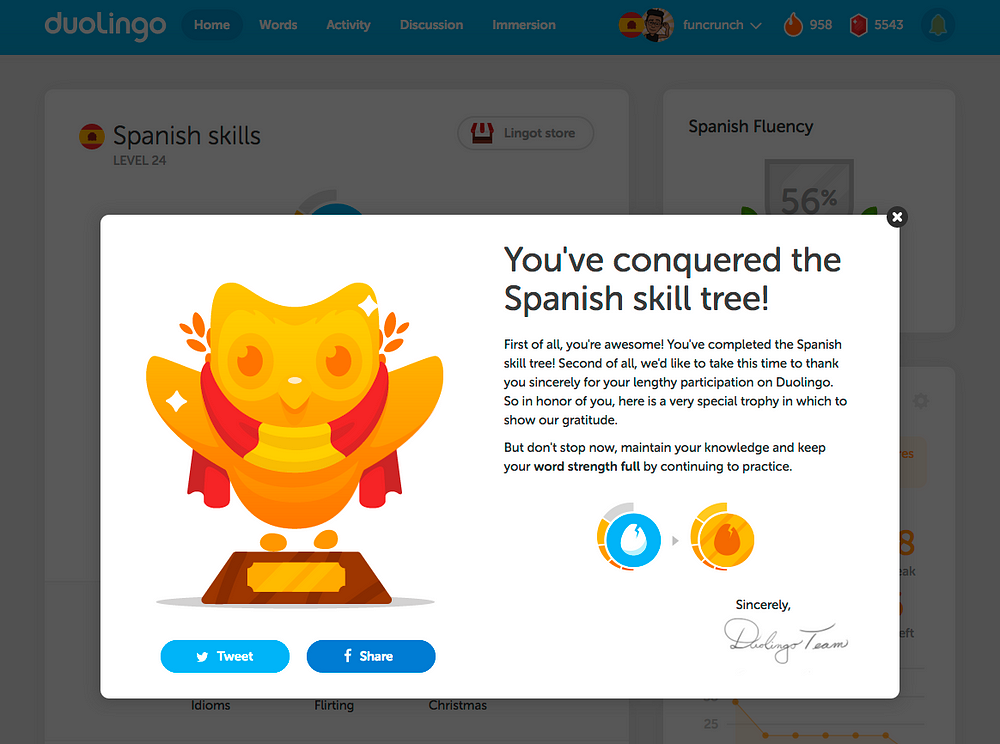Member-only story
Duolingo and my history of lazy Spanish practice
Language learning and the limits of gamification

This morning I completed a practice session on Duolingo, the popular language learning site. Nothing remarkable about this, but I’ve been doing it faithfully every day for nearly four years now. Yes, I have logged practice time on Duolingo every single day since January 3, 2014 — easy to remember because it coincides with the day I began testosterone therapy, a significant milestone in my gender transition. By my calculation, my Duolingo streak now stands at 1459 days.
Unfortunately, my recorded streak was broken in March 2017, as I didn’t notice I’d only scored 10 out of the minimum 20 points I’d set as a daily goal. I briefly contemplated quitting, then realized how foolish that would be. I was here to learn a language, not win a game or earn cred for how many consecutive days I’ve “played” it. And yet, it’s the gamification — earning experience points and virtual currency (“lingots”), passing checkpoints, completing achievements, and maintaining that all-important streak — that is a large part of what makes language learning on Duolingo fun for me, and something to look forward to rather than a tedious chore.
Is this form of education the most effective way to learn a language, though? Am I truly 57% fluent in Spanish, as the…
